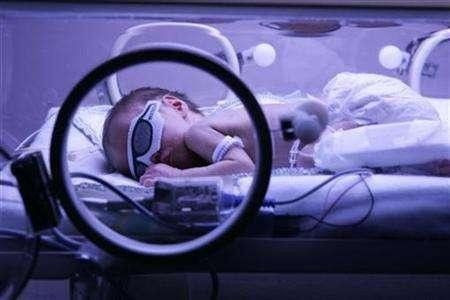Infants Not Getting Proper Eye Consultation: Survey

Majority of parents in the U.S. are neglecting an early eye check-up of their infants, the American Optometric Association's (AOA) 2011 American Eye-Q survey has revealed.
Only 18 percent of the parents who participated in the survey reported consulting an eye doctor for a complete eye check-up in the first year of the child.
The majority of parents are aware that lazy eye (61 percent) and crossed eyes (63 percent) can be detected in infants but less than one-third were aware that cancer, farsightedness and nearsightedness may also be detected during an infant exam, the survey said.
The sixth annual American Eye-Q survey was shaped and executed in conjunction with Penn, Schoen & Berland Associates (PSB). PSB conducted an online survey from May 19 and May 23 last year and interviewed about 1,000 Americans aged 18 or above.
The vision and eye health problems are very rare in infants, but an early detection will help solve the problem before it affects a child's overall health and development. An untreated vision problem can lead to developmental delays, permanent vision problems and sometimes even to life threatening health risks.
Considering the risk, 'InfantSEE,' a year-round public health program, was formed to facilitate free professional eye care for the infants between six and 12 months.
It's difficult to notice vision problems in infants without a thorough, comprehensive eye exam, said Dr. Glen Steele, optometrist and chair of the InfantSEE committee.
Even if a child is hitting all his or her developmental milestones and not showing any signs of problems, there could still be issues with the child's vision. Identifying problems and beginning treatment as early as possible is key.
Optometrists in InfantSEE help to diagnose the vision related problems that may not be detected in a routine pediatric health check-up. The method is different from the traditional eye chart test which cannot be used with infants as it needs identification of letters or symbols with proper attention.
Unlike the traditional system, optometrists conduct tests to assess the infant's ability to follow or fix his eye on an object, or at which objects the baby prefers to look, and at what distances.
Some eye problems are connected with family history. So a comprehensive patient history is compiled, says the InfantSEE.
The check list used by the optometrists in InfantSEE includes a research on the parents' vision problems such as retinoblastoma (eye cancer), congenital cataracts and genetic and metabolic diseases.
The use of drug or alcohol, infection of mother during pregnancy (e.g., rubella, toxoplasmosis), sexually transmitted diseases, cytomegalovirus, or HIV, premature birth, low birth weight or use of oxygen after birth and difficult or assisted labor which may be associated with fetal distress or low APGAR scores are also taken into consideration.
The AOA suggests a regular method of eye exam that is mandatory during the kids' growth. The child's first eye exam should be when it is six months old. The next should be at three years and before entering the school. After that, there should be yearly check-ups.
© Copyright IBTimes 2024. All rights reserved.





















